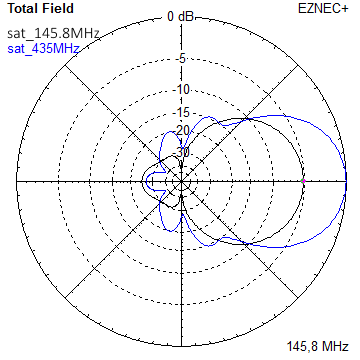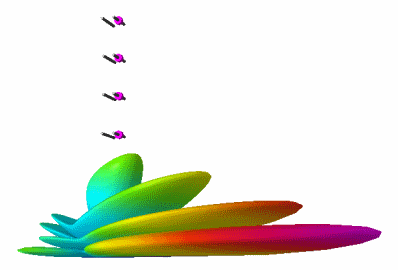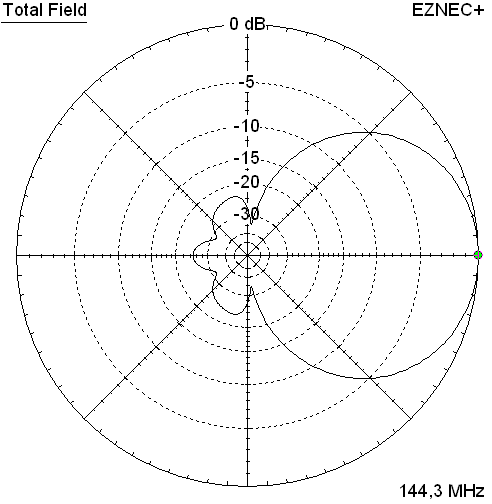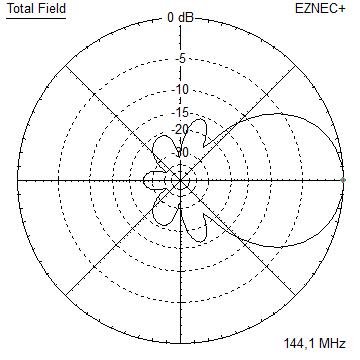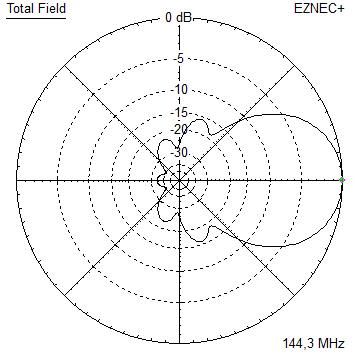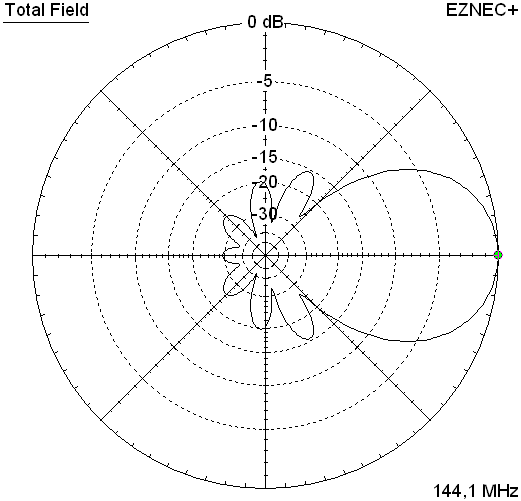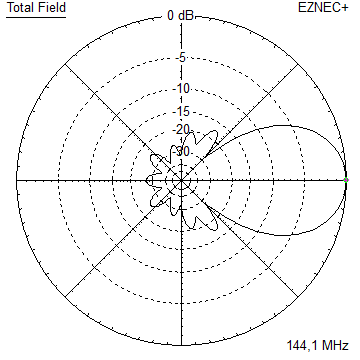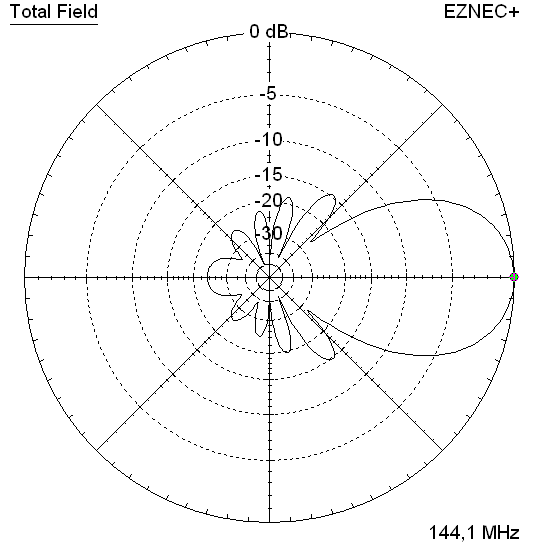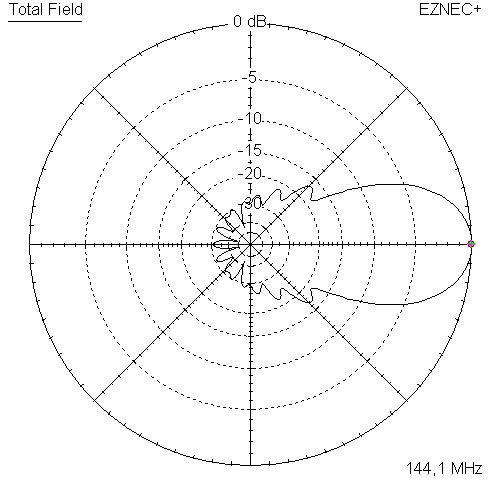
YBN 2-2w Yagi with Conventional Driven Element
This little Yagi is as much bandwidth as can be. A forgiving and easy to build alternative to the HB9CV.
It does not have the HB9CV's famous F/B ratio but is much easier to build, no phasing lines, no capacitor ...
Nothing to protect from rain and snow. When you ar portable with a little antenna and little rig anyway
a high F/B does not help much. And note that the HB9CV's true gain is around 4.15 ... 4.2 dBD. No more then that.
The photo shows a build on 15 x 15 mm boom and symmetrising
Quarterwave Line grounded with an N-cable-flange bushing.
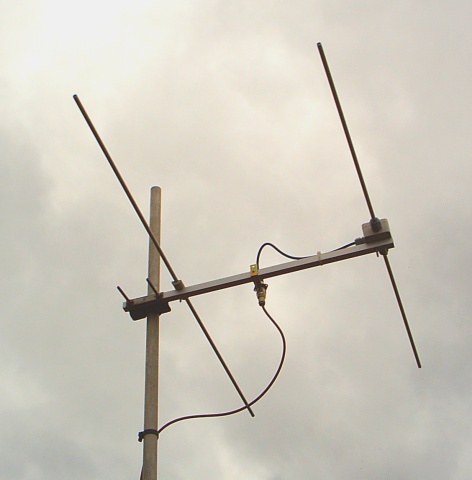
A YBN 2-2w built by Thomas, M0ABA
Thomas reports to work into GW and DK over 480 k easily using the FT8 digital
mode with this small Yagi. Record so far is a FT8 rx report over 648 k by DK0IZ in JO43sx.

Performance Data
Gain vs. isotr. Rad. 6.4 dBi Gain vs. Dipole 4.3 dBD -3 dB H-plane 133.2 deg. -3 dB E-plane 69.6 deg. F/B -9.0 dB F/R -6.5 dB Impedance 50 ohms Mechan. Length 410 mm Electr. Length 0.20 λ Stacking Dist. h-pol. top-to-bottom 1.30 m side-by-side n.aGeometry
Table revised Oct. 2017
Pos. 1/2 Length BC 20x20 BC 25x25 BC 1x1"
in NEC = 3.9 = 7.6 = 7.9
Refl. 0 506.0 1015.9 1019.6 1019.9
DE 410 463.0 929.9 933.6 933.9
ele. 8 mm ele. 8 mm ele. 3/8"
Note: element lengths for Ø 8 mm fit 5/16" too
The Dipoles diameter is 10 mm for all examples.
Use EZNEC's Auto-Segmentation at 144.3 MHz.
Pattern and VSWR Plots
Elevation and Azimuth plot

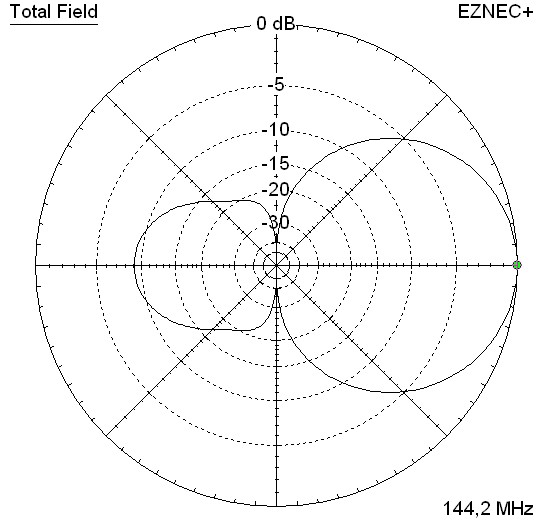
Simulated Return Loss and VSWR plot

Downloads
EZNEC file of this Yagi with Straight Split DE
EZNEC file of 2 x vertical stack
EZNEC file of 4 x vertical stack
Stacking 2 over 2
Elevation plot at 1.3 m distance
Note: the dipoles must be prolonged to 474 mm in NEC or plus 11 mm for
all ready to use measures due to impedance interaction at that close distance.
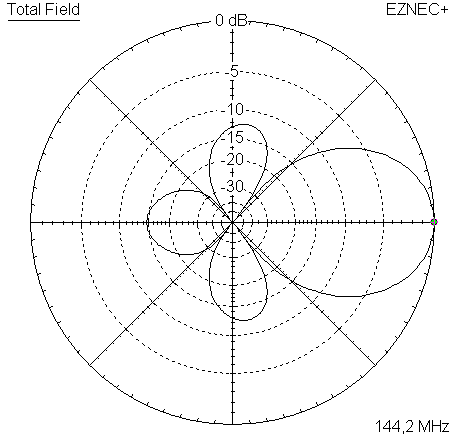
Gain vs. isotr. Rad. 10.2 dBi Gain vs. Dipole 8.1 dBD -3 dB H-plane 45.8 deg. -3 dB E-plane 72.2 deg. F/B -14.7 dB F/R -14.7 dB
Stacking 4 x 2 vertically
Elevation plot at 1.3 m distance each
Note the different element positions and lengths of the inner Yagis - see drawing below.
Simulation at 4 m above perfect ground


Free Space Simulation
Elevation and Azimuth Plot and Data


Gain vs. isotr. Rad. 13.5 dBi Gain vs. Dipole 11.4 dBD -3 dB H-plane 21.2 deg. -3 dB E-plane 71.0 deg. F/B -17.7 dB F/R -17.7 dB
These numbers are almost equal to the DJ9HO 4 x Quad. Gain is approx. similar,
HBW is a little wider, F/B almost similar. But as 4 x 2 ele. probably more handy for portable use.
The DK7ZB 4 x Quadlong is less high, just 2.85 m compared to the 3.9 m of the 4 x 2 element.
The 4 x Quadlongs gain is 2.1 dB less while F/B of the 4 x Quadlong is 2.2 dB higher.

73, Hartmut, DG7YBN

